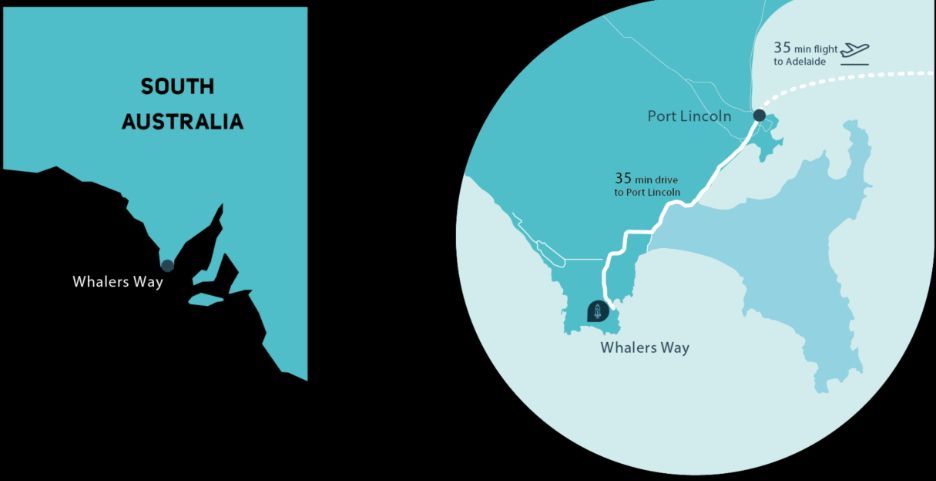An update from Viasat regarding their recently announced plans for new satellites in LEO.
Archives for May 2020
Forrester Reports: Unsecured Creditors Gain Intelsat Bankruptcy Court Access + Telesat Wants More…


Chris Forrester
Some Intelsat smaller shareholders are appealing to the US Trustee that they gain special representation in the bankruptcy court, saying that they are being ignored in the satellite operator’s reconstruction and that they fear being wiped out in the process, as is being reported by journalist Chris Forrester at the Advanced Television infosite.
There is a planned hearing on June 9th into many matters connected with Intelsat’s Chapter 11 bankruptcy protection.
Their letter to US Trustee John Fitzgerald, as first reported in industry magazines, stated, “[Intelsat] management deliberately defaulted on a debt payment when they had the cash on hand to pay. They also stated that the bankruptcy was only necessary to acquire a bridge loan that would allow the company to move forward on a lucrative 5G FCC contract. After filing for bankruptcy, management revealed that they had sourced the bridge loan internally, but now wished to use this opportunity for a full restructure. Wiping out shareholders would seem to be management’s logical next step – given such a lack of transparency.”
The letter also referred to allegations of insider trading and said that Intelsat’s management had not acted in the best interests of all shareholders.
Fitzgerald on May 27th created a committee of unsecured creditors comprising Boeing, the Pension Benefit Guarantee Corp, Delaware Trust, JSAT International and others to serve.
Also being reported at the Advanced Television infosite: Notwithstanding the financial challenges head – and a string of bankruptcies from those pushing for satellite mega constellations – Ottawa-based Telesat is asking US regulators to approve a significant expansion of its planned 209-craft constellation. Now it wants 1,671 satellites.
Earlier this week, it was reported that OneWeb, despite being in Chapter 11 bankruptcy protection, wants to boost its constellation to a massive 48,000 satellites in orbit from the current planned 648. Just 74 were orbited prior to it entering bankruptcy protection.
Back in November of 2019, LeoSat, a would-be constellation operator, failed and suspended operations, having struggled to put financing in place. LeoSat, which was backed in part by Thales Alenia Space, wanted 108 satellites in orbit. Its initial finance came from Hispasat and SkyPerfect/JSAT of Japan but the two declined to participate in a further funding round.
Telesat already has two test/debut satellites in orbit, but is just one business that, on May 26th, filed applications to the FCC to modify its plans. OneWeb made its similar 48,000 satellite expansion plan on the same day.
Telesat initially wanted just 117 satellites in its LEO plan. Then its plans expanded to 298 craft. Now it wants a 1,671 constellation in two orbits for efficient delivery of broadband connectivity. However, it has yet to confirm who will build or launch the satellites but has signed provisional contracts with two – unnamed – prime contractors.
Elon Musk’s SpaceX is also extremely active in this space with his ‘Starlink’ system already having launched some 420 satellites. Another 60 were due to launch on May 27th but the planned – and now delayed – launch of two astronauts to the International Space Station interfered with the Starlink launch schedule. The next launch for Starlink is now expected in early June. Musk has firm plans for an initial 12,000 satellites and eventually another 30,000 on top of that.
The ‘Holy Grail’ for these low-orbit satellites is low latency broadband connectivity and then delivering that bandwidth to any location on the planet.

Viasat’s LEO Interests…
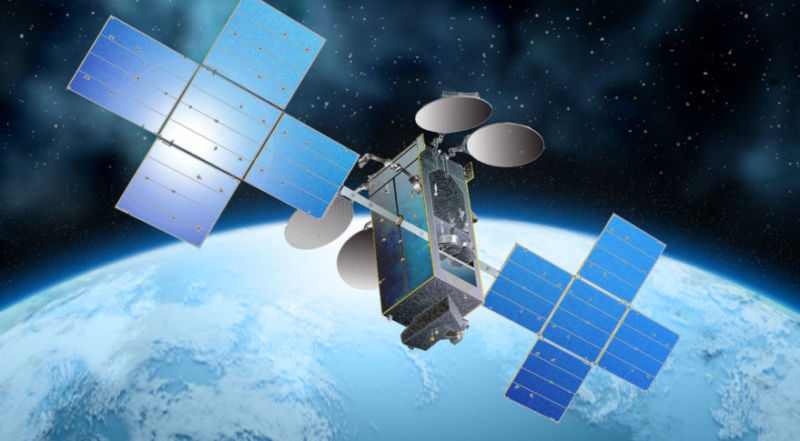
Artistic rendition of the ViaSat-3 satellite.
The cause de rigueur for industry actors these days encompasses smallsats due to their efficacy and viability in accomplishing numerous tasks which were once the purview of larger spacecraft.
Now add Viasat to the list of companies planning LEO constellations that are comprised of hundreds of satellites. Gone, apparently, is the company’s plan for a MEO constellation, opting now for the infusion of LEO smallsats into orbit.
One key for the company’s plans revolves around some subsidy funding from the $16 billion RDOF (Rural Digital Opportunity Fund) established by the Federal Communications Commission for direct monetary injections into broadband programs. This potential government payout certainly affords Viasat with an enticing move into the LEO constellation market segment.
This information comes on the heels of Viasat’s announcement of their ninth consecutive quarter of growth, bringing in Q4 2020 revenues to just over $591 million and a y-o-y of $2.3 billion and $212.4 million in revenues derived from the firm’s satellite services… that’s a y-o-y of 10.5 percent.
Now look for Viasat to request the FCC’s prior approval of the firm’s 20 MEO satellites to be transitioned to their LEO constellation. However, nothing is a given, due to the FCC’s rules regarding how the initial $16 billion of the RDOF’s total $20.4 billion initial funding will be allocated to Phase 1 or even if firms, such as Viasat, can meet the agency’s broadband performance tiers. (See the FCC’s “Measuring Fixed Broadband — Eighth Report at this direct infolink — www.fcc.gov/reports-research/reports/measuring-broadband-america/measuring-fixed-broadband-eighth-report“)

Mark Dankberg
Company CEO Mark Dankberg realizes this will be an uphill battle for Viasat and is hopeful that Phase 2 reserved RDOF funding of $4.4 billion in subsidies will encompass eligibility for LEO activities. Phase 2 will kick in after new broadband maps are developed to mark underserved areas.
Still on the Viasat development table are the ViaSat-3 and ViaSat-4 satellites. Dankberg stated that a LEO constellation would find realization sometime around 2026, if all comes to fruition.
Exos Aerospace’s Rocket Engine Test Successful Despite Explosion
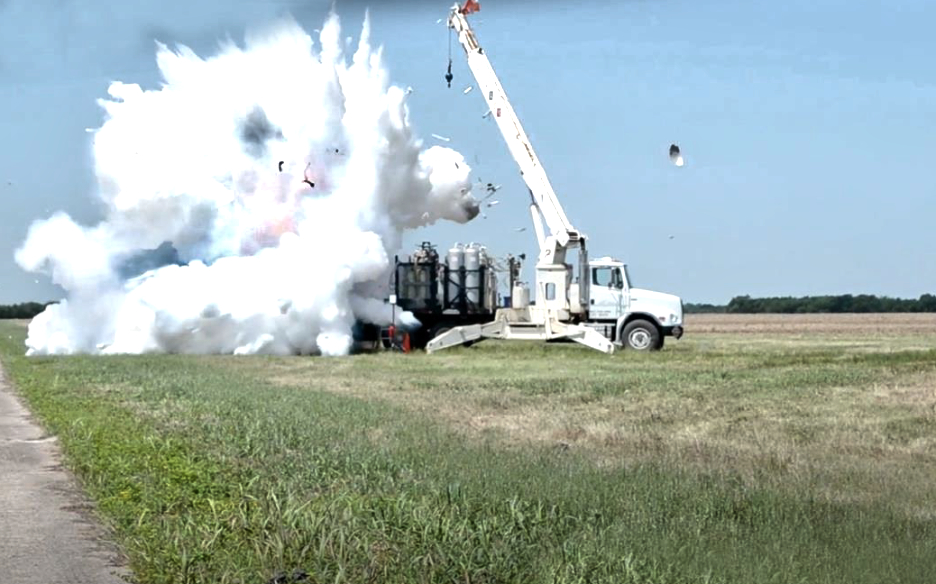
Set upon the Caddo Mills (Texas) Airport Testpad, Exos Aerospace’s new SARGE R2 rocket engine was ready for testing.
The company’s efficient, eight-man Operations Team prepared to conduct a 55-second engine run test. In the briefest moment, as the valves opened and the liquid oxygen mixed with the Ethanol fuel, the ambient noise was sucked into a vapor of silence, then blasted by the roar of a clean-burning engine.
For 15 seconds, the fiery exhaust gave a glimpse into the thrust that will fly the Exos’ SARGE R2 rocket. However, the impressive display of power was cut short by the failure of the LOX tank on the test stand, resulting in the near-instantaneous release of the liquid oxygen and ignition of the residual Ethanol in the supply lines between the tanks and the engine. This created all the pomp & circumstance expected of such an energetic event.
After the level-two Safety event was under control, the Exos team was in good spirits, as they seemed more focused on the new data and slight performance boost of the SARGE engine than with the theatrics that accompanied the test.

John Quinn
Co-Founder and COO, John Quinn, said the company knew the test-stand was nearing its end-of-life, but the failure will feed the firm’s Weibull analysis and will make our space vehicles more reliable as hard data points feed better models, resulting in better hardware understanding. If you can safely Run To Failure, it can provide both valuable data on in-service hardware and also offer financial benefits. Quinn relayed that the SARGE platform continues to serve as a capability demonstrator and risk mitigation program as the company proceeds to develop this reusable orbital rocket.
The Exos team team was well outside the blast zone and the engine survived with minimal damage. The test stand Ethanol and other supply tanks on the truck were unscathed by the blast. Though prognostic event prediction is far preferred, the failure provides valuable data that the team is working to extract from the test sleds memory. While the hope had been to obtain a few more uses out of the test stand, it served the company well, having supported more than 200 tests.
The cost savings of Running To Failure could pay for most of the materials needed to build several test stands, but the real value is understanding the operational Failure Mode.
Co-Founder Phil Eaton added that the company expected some improvements on this second SARGE build, but the engine ran at the high-end of our design range.
“She was hauling,” exclaimed safety officer Neil Milburn who has 20+ years deciphering the physics of many such engines.
The Texas-based rocket manufacturer is proving, once again, that high-performance space flight technologies can be developed on an accelerated timeframe, with a small efficient team, using their ExosWorks program structure. Their last SARGE reusable test flight marked the decommissioning of SARGE I. This was the fourth consecutive flight of the same rocket.
Exos stands with the three companies in the world that have flown the same rocket four times. SpaceX did it with 6,000+ employees, Blue Origin with a team of over 3,000, and Exos Aerospace (on a smaller scale, of course) with fewer than 20 employees.
Significant progress is being made to that end as EXOS has begun work through its first National Charter Enterprise Program in Italy (working with PricewaterhouseCoopers) and is working to replicate the effort in South Australia. The team will be applying their accelerated processes to orbital rocket development in a Special Economic Zone in the Basilicata region of Italy. The National Charter Enterprise model may mark the beginning of a new alternative to VC financing with Exos Aerospace poised to become a cost-effective microgravity provider, making SPACEavailable… to the world.

Rocket Lab Resumes Launch Ops for ‘Don’t Stop Me Now’ New Zealand Launch
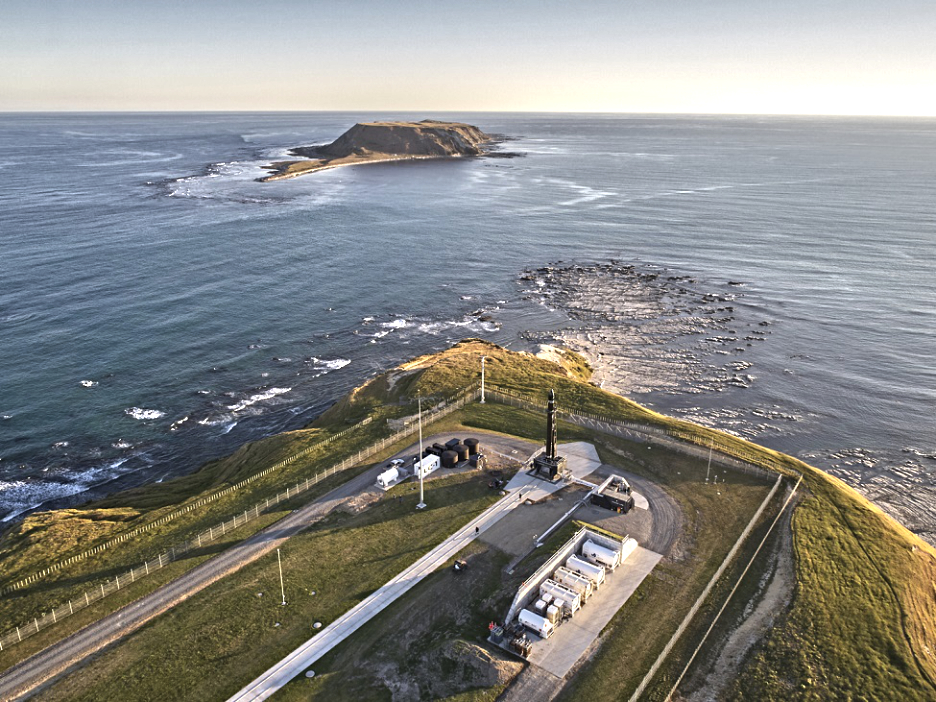
Rocket Lab has resumed launch operations for the firm’s next Electron launch, following the easing of COVID-19 restrictions.
Rocket Lab’s 12th Electron launch was postponed from its original date of March 27th following the implementation of the New Zealand Government’s Alert Level 4 Covid-19 national response, which required most businesses to close, restricted travel and instructed people to stay home.
With COVID-19 restrictions now eased, a new launch window for this mission has been scheduled to commence June 11, 2020, NZT, from Rocket Lab Launch Complex 1 on New Zealand’s Mahia Peninsula. The mission will loft payloads for the National Aeronautics and Space Administration (NASA), the National Reconnaissance Office (NRO) and the University of New South Wales (UNSW) Canberra Space.
The Electron launch vehicle and the Launch Complex 1 ground systems have remained in a state of readiness throughout the Covid-19 lockdown in preparation for a quick return to launch operations. Enhanced health and safety processes will be implemented for this launch in line with government health advice to protect Rocket Lab personnel. These measures include physical distancing, split shifts, maintaining contact tracing registers, limiting interaction between team members, enhanced cleaning, and stringent hygiene standards.
Payloads onboard ‘Don’t Stop Me Now’: NASA’s ANDESITE (Ad-Hoc Network Demonstration for Extended Satellite-Based Inquiry and Other Team Endeavors) satellite will launch as part of the agency’s CubeSat Launch Initiative (CSLI). Created by students and researchers at Boston University, ANDESITE will conduct groundbreaking scientific study into Earth’s magnetic field.
This mission also carries three payloads designed, built and operated by the National Reconnaissance Office. The mission was procured under the agency’s Rapid Acquisition of a Small Rocket (RASR) contract vehicle. RASR allows the NRO to explore new launch opportunities that provide a streamlined, commercial approach for getting small satellites into space, as well as provide those working in the small satellite community with timely and cost-effective access to space.
The final payload onboard is the M2 Pathfinder satellite built in a collaboration between the University of New South Wales Canberra Space and the Australian Government. The M2 Pathfinder will test communications architecture and other technologies that will assist in informing the future space capabilities of Australia. The satellite will demonstrate the ability of an onboard software-based radio to operate and reconfigure while on-orbit.
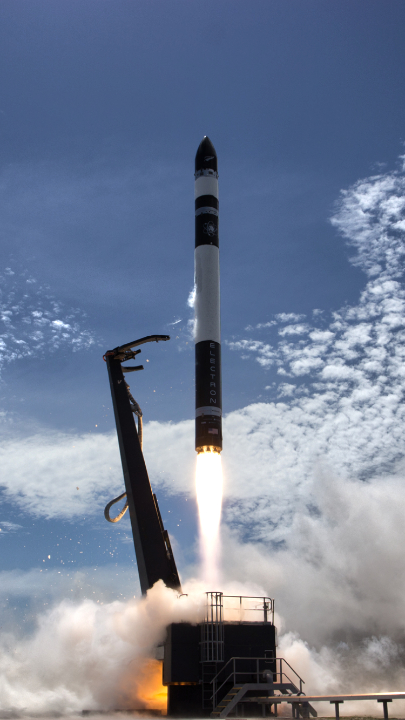
Kleos Space and Global Spatial Technology Solutions Sign an MOU to Enhance Maritime Domain Awareness
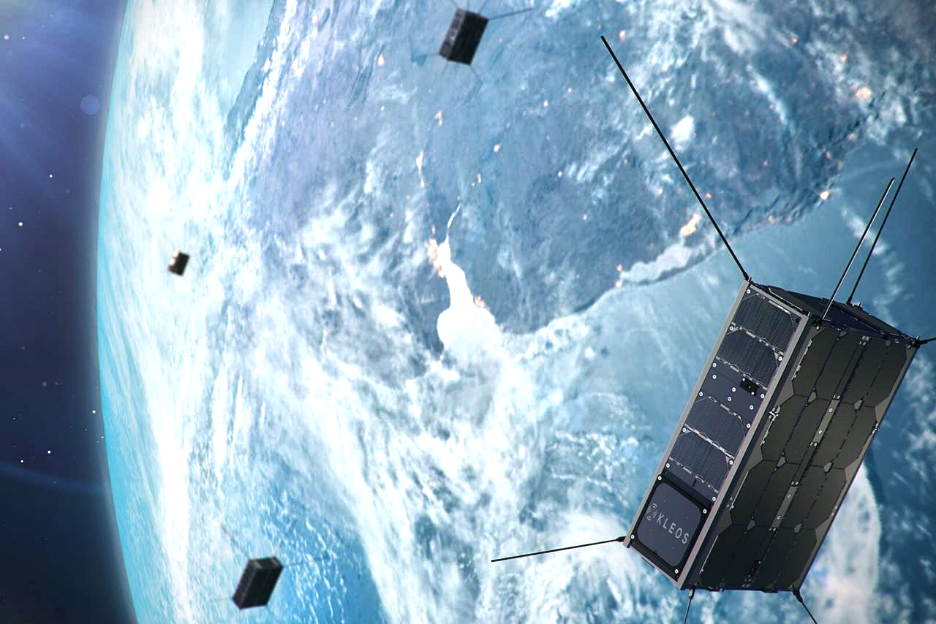
Kleos Space S.A. (ASX: KSS, Frankfurt: KS1) has partnered with GSTS to provide enhanced Maritime Domain Awareness capability to GSTS’s OCIANA product suite.
GSTS (Global Spatial Technology Solutions) is a wholly-owned Canadian company that provides innovative decision-support solutions for the maritime market through the use of Artificial Intelligence (AI) and Big Data analytics. GSTS predictive technologies empower future-friendly decision-making to help the maritime, security, logistics and service sectors navigate tomorrow… today.

Kleos data will provide a valuable addition to GSTS services and data solutions by supporting vessel detection, classification and identification.
Kleos’ Scouting Mission satellites that are in Chennai, India, awaiting launch on Indian Space Research Organisation (ISRO) PSLV C49, will detect and geolocate maritime radio frequency transmissions to provide global activity-based intelligence, enhancing the intelligence, surveillance and reconnaissance (ISR) capabilities of governments and commercial entities when Automatic Identification System (AIS) is defeated, imagery unclear or targets out of patrol range.
Kleos’ satellites will be in a 37-degree inclination orbit, covering crucial shipping regions for defense and security customers including the Strait of Hormuz, South China Sea, Australian coast, Southern US coast as well as the East and West African coast.
The Memorandum of Agreement signed by Kleos and GSTS allows for investigating opportunities to collaborate and develop marketable solutions; and to implement a scenario and demonstration to validate the technical feasibility and usability of collaborative solutions with the initial data licence procured for demonstration and assessment purposes.
Andy Bowyer, the Kleos CEO, said the company’s satellites and data will enhance GSTS capabilities when fused with other data sets in their innovative OCIANA environment, assisting in the goal to provide greater insights, detecting illegal activities and threats for their customers.
Richard Kolacz, the GSTS CEO, commented that Kleos will add another powerful data set to the OCIANA product suite to further enhance our maritime situational awareness capability and improve the firm’s ability to detect and predict vessel activity to support defence, civil and commercial solutions.
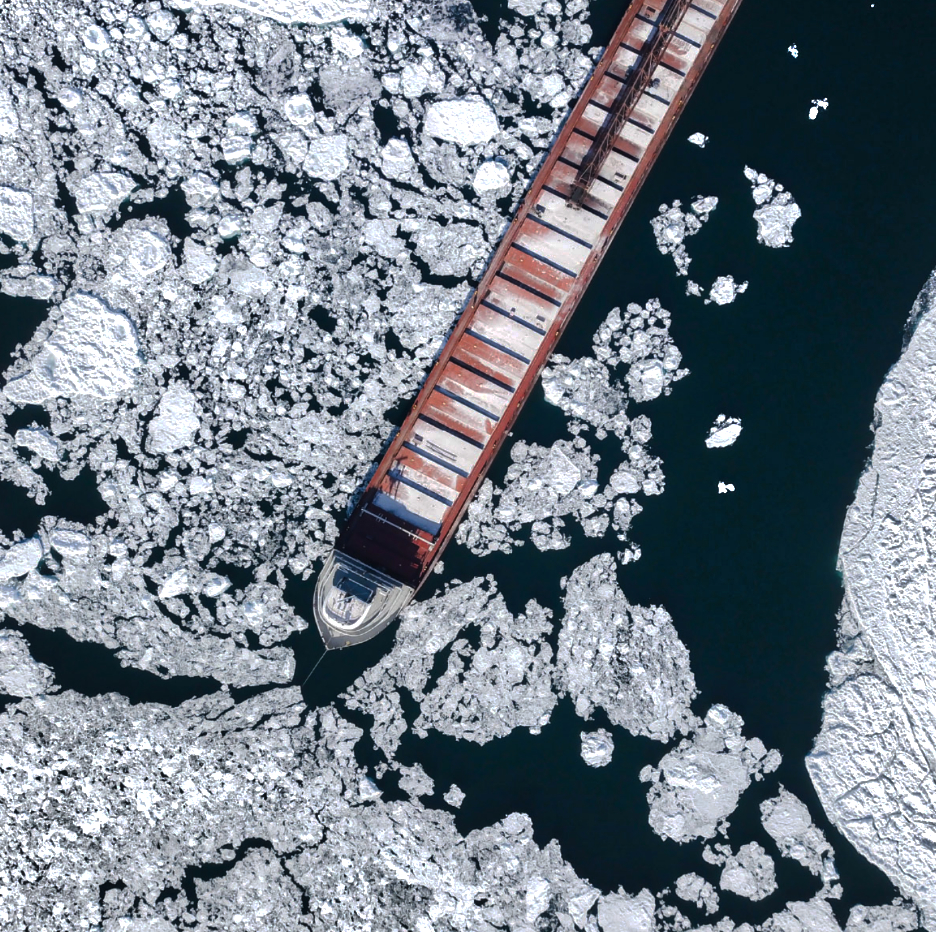
Launch Partnership Signed Between University of Edinburgh’s Asteria Student Satellite Group and Responsive Access
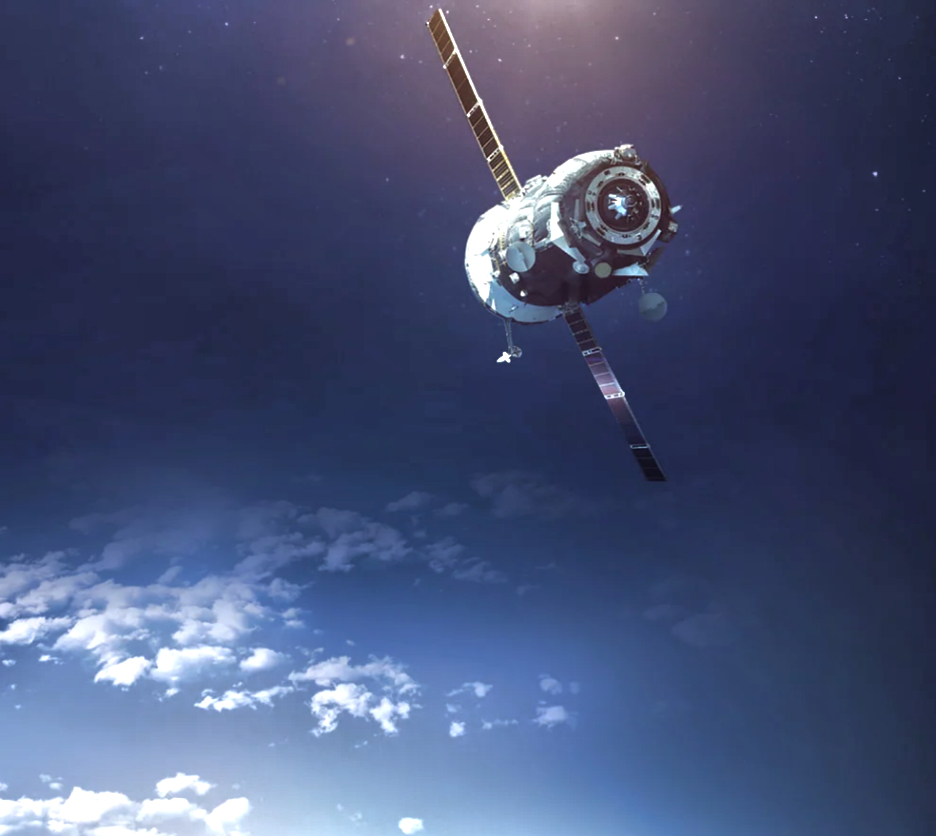
A student-led satellite group from the University of Edinburgh has signed a Memorandum of Understanding (MoU) with Responsive Access, a launch brokerage firm that participates in the European Space Agency Business Incubation program, with a view to procuring a launch opportunity.
Student satellite group Asteria are hosted at Edinburgh’s Bayes Centre innovation hub. Their team is working on the production of a cubesay in order to monitor the likes of vegetative blight and flooding, as well as a new mission entitled “Remote Sensing of Air Pollution: New Insights Into Seasonal Respiratory Diseases,” which started two months ago in light of the COVID19 pandemic.
By partnering with Responsive Access, the project’s chance of finding a swift and suitable launch opportunity will increase, while the group intend to benefit from the various mission management processes provided by the space brokerage company from their base at the Higgs Centre for Innovation, part of the Royal Observatory site in Edinburgh.
Asteria was founded last year to address the motivated interests in data science and space engineering among Edinburgh’s students and academics, with a view to developing solutions around matters of the environment and the United Nation’s Sustainability Development Goals (UNSDGs). They plan to achieve their aims using purpose-built satellites, state-of-the-art sensors, robust system designs and advanced post-processing.
The cubesat project is supported by the University Fellow for Space and Satellite Analysis, as well as academics from the Schools of Geosciences, Informatics and Engineering.
Their base at the Bayes Centre allows them to work alongside cutting-edge robotics and artificial intelligence developments, as part of an innovation hub that was opened in 2018 by Her Royal Highness, The Princess Royal, after receiving funding through the Edinburgh City Deal. Edinburgh is currently home to several space data organizations capturing and analyzing downstream data for a variety of reasons, including the monitoring of environmental change, food and agricultural stock and maritime channels.
The data-driven innovation taking place in the city is part of a wider space ecosystem in the country that has seen more than 100 satellites built in Glasgow, rocket manufacturers developing launch systems and no-less than five developing spaceport sites in areas such as Prestwick and Scotland’s Highlands and Islands.
Responsive Access Chief Executive, Andrew Paliwoda, stated that the company’s team is delighted to have been selected to help move Asteria’s exciting project toward launch. The opportunity to work with leading UK universities provides the firm with a valuable way to fine-tune the Responsive Access offering, which is based around the delivery of low-cost launch via the firm’s launch vehicle partners. It also lets for the testing of the ancillary services that can be offeedr to clients, from environmental testing and certification for satellites, through to assistance with insurance and license paperwork.
The partnership with Asteria marks the further milestone for Responsive Access, following their announcement last month surrounding their support of GU Orbit, based at the University of Glasgow, with their mission preparation.
Ani Vasudevan, Managing Director at Asteria, said the organization is thrilled to be collaborating with Responsive Access for the launch of the team’s first satellite, Oracle 1. Developing a satellite from mission planning to launch is something that very few, if any, students in the UK have exposure to, yet many are enthralled by the potential. This is true in a time where student projects are becoming an increasingly vital aspect of learning at Universities. This partnership with Responsive Access will help Asteria nurture that excitement in space for many years and many satellites to come.

Self-Organizing Smallsats to Form the First 3D Formation
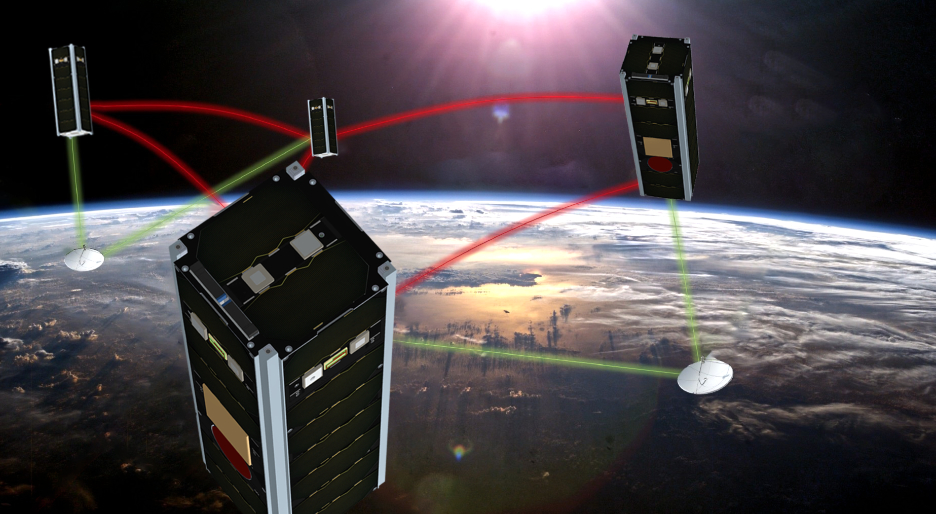
NetSat: Four satellites in formation at an altitude of 600km.
Four NetSat smallsats will autonomously control — for the first time — a three-dimensional configuration in space to enable new observation methods for climate research as well as for innovative future telecommunication systems.
To capture an object without blind spots, it needs to be imaged from different directions and by sensor data fusion, from which information is then derived. In NetSat, four nano-satellites will demonstrate relevant techniques for optimum self-organization of a satellite formation in three-dimensional space. This opens new perspectives in Earth Observation (EO) as well as for future telecommunication networks. In addition, there are strategies for collision avoidance.
The four smallsats (each one possesses a mass of 4 kg) are currently being finalized at the research center Zentrum für Telematik (ZfT) in Würzburg (Germany. In August of 2020, they will be delivered to orbit via a Russian Soyuz-rocket at a 600 km altitude.
The objectives of NetSat are to produce scientific breakthroughs for control of the three-dimensional configuration to provide optimum observation conditions. For this purpose, each satellite carries a highly efficient, electric propulsion system (developed by the Austrian company, Enpulsion) and a high-precision attitude control system composed of extremely small and power-efficient reaction wheels (from S4–Smart Small Satellite Systems and Wittenstein Cyber Motors).
The telecommunication link between the satellites supports data exchange on position, attitude and planned maneuvers. In combination with advanced control methods, the coordination of these four smallsats can be realized. While the long-term task planning is done by the space control center in Würzburg, the reaction on deviations and the fine tuning of the formation is handled autonomously by the smallsats onboard software.
The NetSat mission is sponsored by an ERC Advanced Grant and by the Bavarian Ministry of Economics. In 2012, the European Research Council (ERC) honored Prof. Dr. Klaus Schilling with the highly valued European research award to promote scientific pioneer research in space technology and control systems. The independent research, institute Zentrum für Telematik (ZfT) in Würzburg, was selected as the host institution for NetSat due to that organization’s outstanding test infrastructure for multi-satellite systems. (https://erc.europa.eu/projects-figures/stories/small-cooperative-future-spacecraft-systems )
The NetSat results will be directly transferred to the follow-up smallsat Eo missions: TIM – Telematics International Mission:
- The ZfT coordinates, within the RLS partnership from 5 continents, the implementation and use of 9 satellites for innovative 3D-EO for volcano eruptions, earthquakes and environment monitoring. (launch expected in 2021; www.rls-sciences.org/small-satellites.html)
- In CloudCT, the self-organization of 10 smallsats will be used to characterize, via computed tomography methods, the interior of clouds, obtaining… for the first time… important parameters for climate models. (launch expected to occur in 2022; cordis.europa.eu/project/id/810370)
Measurement networks composed of smallsats will provide quickly improved decision support for emergency situations as well as address challenges in climate change.
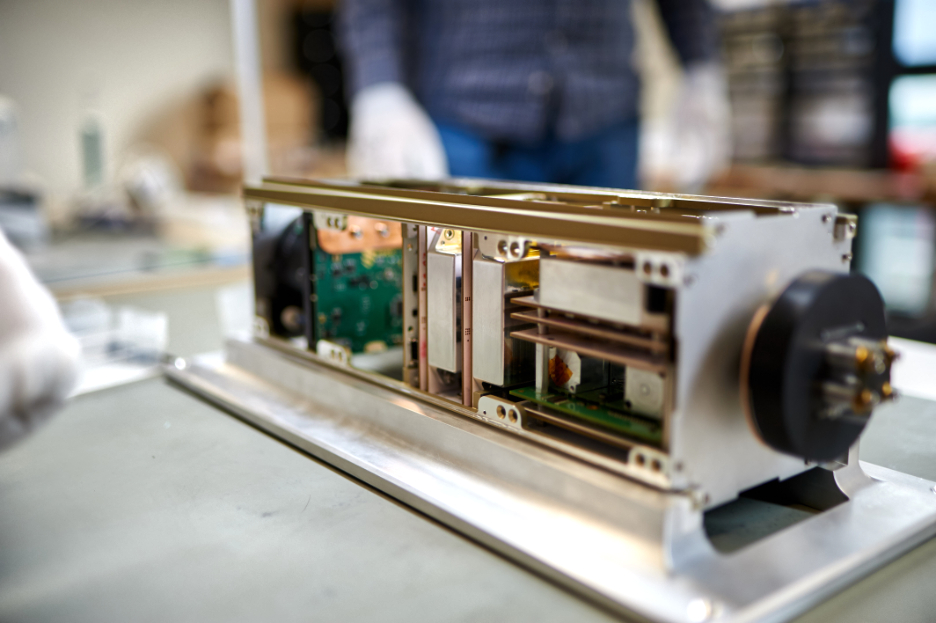
Integration of a NetSat satellite at Zentrum für Telematik.
Virgin Orbit’s Demo Mission: The Good + the Not-So-Good
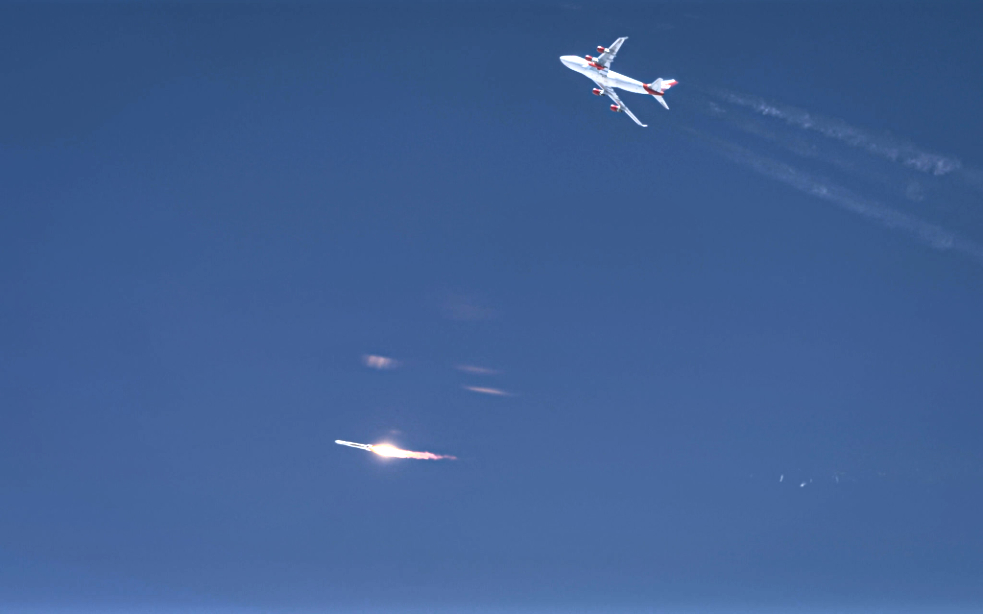
Virgin Orbit conducted a launch demo of the company’s air-launched rocket on May 25 in the skies over the Pacific Ocean, just off the California coast.
The company successfully completed all of the pre-launch procedures, the captive carry flight out to the drop site, clean telemetry lock from multiple dishes, a smooth pass through the racetrack, terminal count, and a clean release. After being released from the carrier aircraft, the LauncherOne rocket successfully lighted its booster engine on cue — the first time the company had attempted an in-air ignition.
An anomaly then occurred early in first stage flight, and the mission safely terminated. The carrier aircraft Cosmic Girl and all of its crew landed safely at Mojave Air and Space Port, concluding the mission.
The company’s next rocket is in final stages of integration at their Long Beach manufacturing facility, with a half-dozen other rockets for subsequent missions not far behind. Virgin Orbit’s decision to begin production of multiple rockets well in advance of this test flight will enable the team to progress to the next attempt at a significantly faster pace, shortly after making any necessary modifications to the launch system.

Dan Hart
Virgin Orbit CEO Dan Hart said that the team performed their prelaunch and flight operations with incredible skill. Test flights are instrumented to yield data and we now have a treasure trove of that. We accomplished many of the goals set for this flight, though not as many as all would have liked. Nevertheless, this is a big step forward. The Virgin Orbit engineers are already poring through the data. and the next rocket is waiting. The company will learn, adjust and begin preparing for the next test, which is coming up soon.
Equatorial Space Systems’ ‘Down Under’ Launch Support is Southern Launch Australia
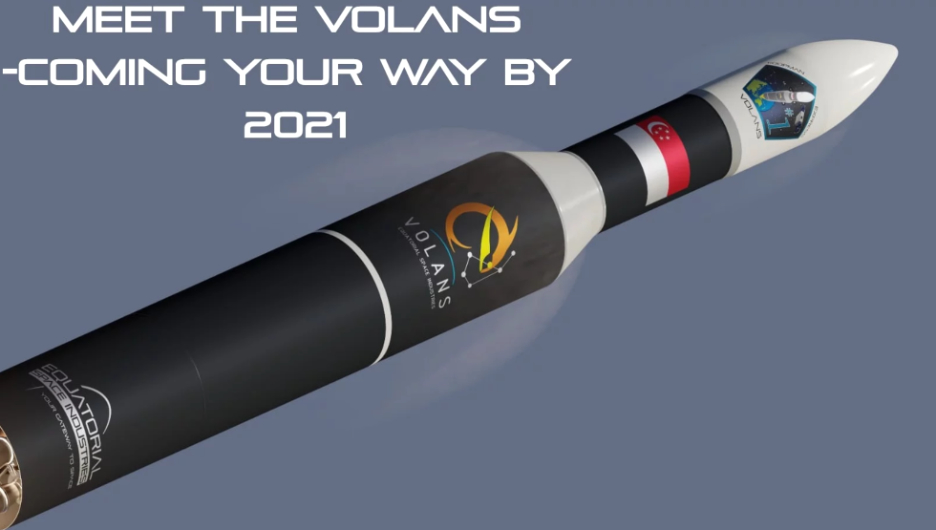
Equatorial Space Systems has signed a Memorandum of Understanding (MoU) to use the facilities of Southern Launch Australia for their upcoming, suborbital, mission program.
The Singapore-based launcher company, notable for their hybrid propulsion systems, last month revealed the Dorado sounding rocket is capable of delivering up to 25 kilograms of payload beyond the boundary of space.
Southern Launch is providing infrastructure and logistics to meet the increasing global demand for orbital and sub-orbital launches of satellites and space payloads. With two multi-user launch sites located in South Australia, having good year-round weather and minimal air and maritime traffic, customers benefit from greater launch window availability and improved launch schedule flexibility.
The company describes themselves as a space tech startup developing innovative technologies for space launch and exploration activities. With proprietary hybrid propulsion, the firm’s technology allows for less expensive, safer and greener alternatives to existing solutions in orbital launch systems as well planetary landing missions.
Aiming for the first orbital launch by 2022, Equatorial Space Systems has previously been crowned the winner of MBRSC Innovation Cup 2018 in Dubai, identified as a Top 500 Deep Tech Startup by Hello Tomorrow 2018 and the Most Promising Startup at the NAMIC Innovation Day 2019.
Simon Gwozdz, the Founder and CEO of Equatorial Space Systems, said when he was a child, he always wanted to take the ‘Indian Pacific’ train journey across the Nullarbor Plain of Southern Australia. The prospect of sending the company’s first rockets into space from its very edge is incredible — Equatorial Space Systems is looking forward to operating from the Southern Launch Australia’s facilities in the very near future.
Lloyd Damp, Founder and CEO of Southern Launch, said the company is delighted to be working with Equatorial Space Systems and their cutting edge HRF-1 hybrid rocket propulsion technology. The firm looks forward to fully supporting their suborbital mission from the Koonibba Test Range in South Australia and demonstrating to the world these emerging capabilities for safe access to space.
